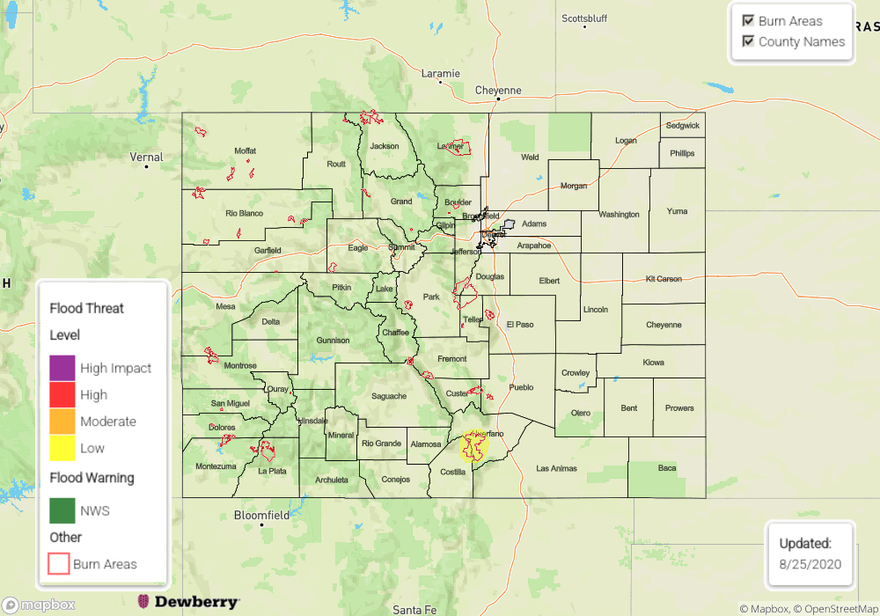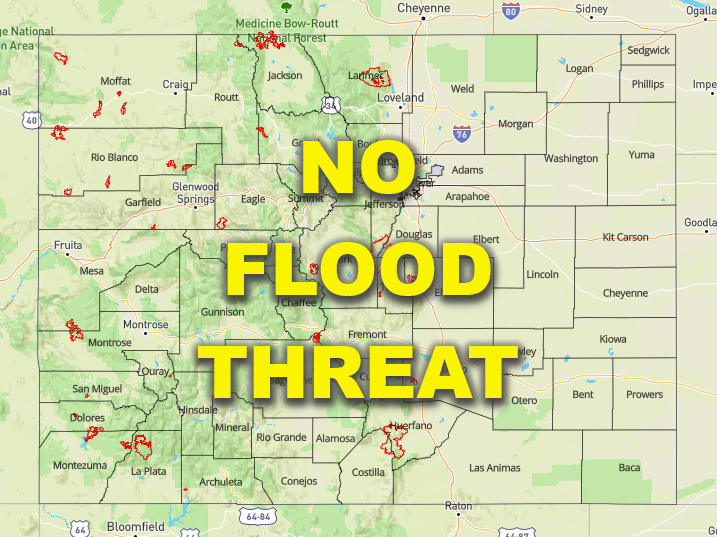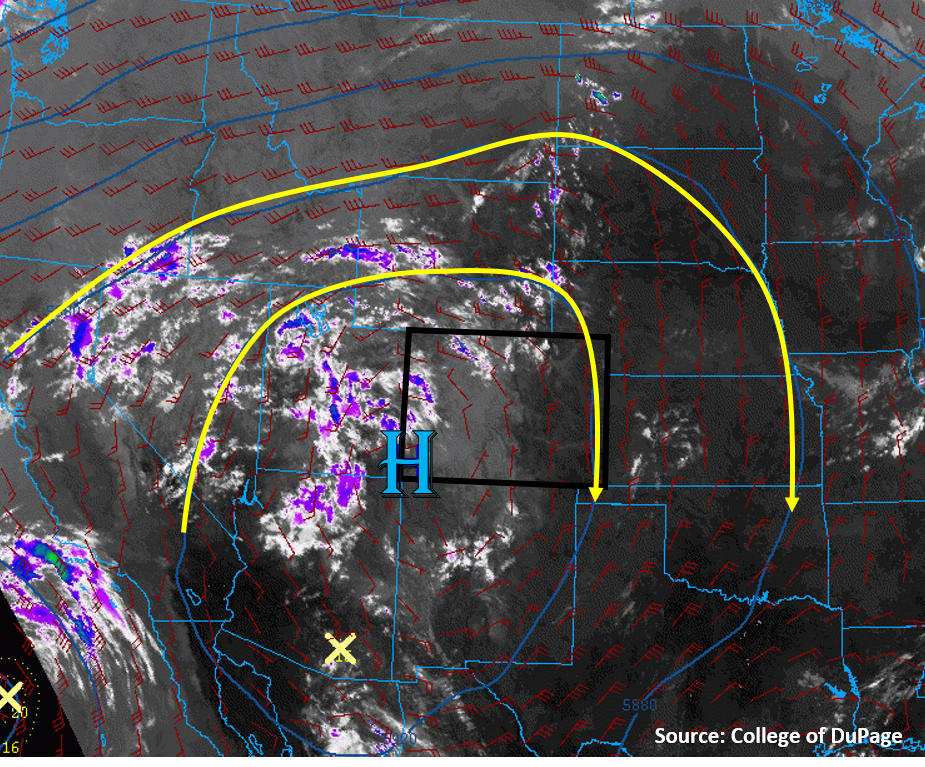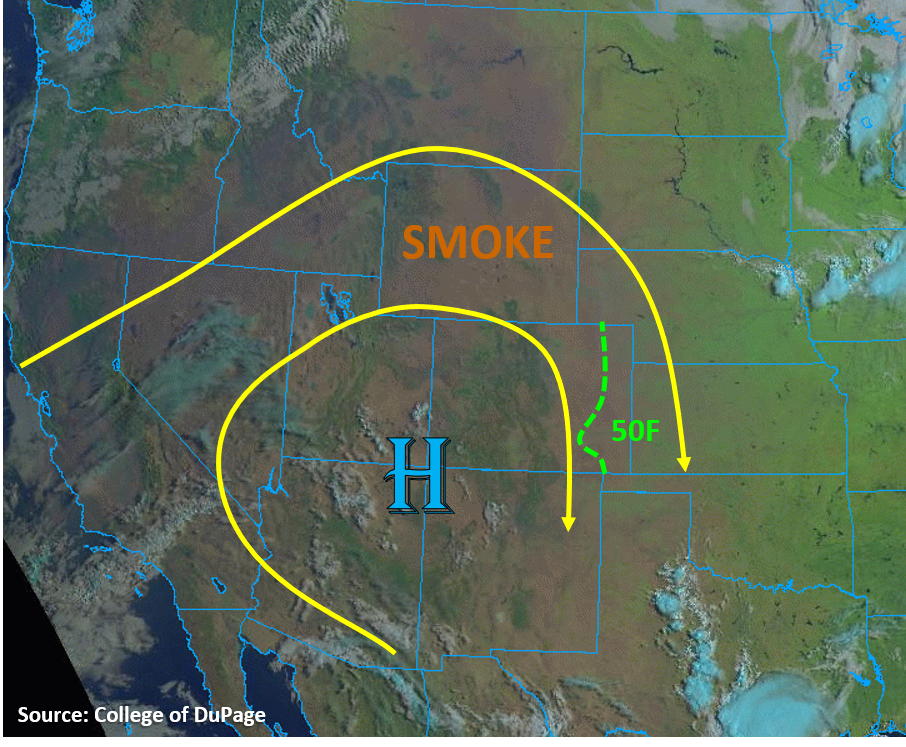Issue Date: Tuesday, August 25th, 2020
Issue Time: 9:15AM MDT
— A LOW flood threat has been issued for the Spring Creek burn area
Today the pattern begins to shift slightly as some mid-level energy, associated with an incoming trough and remnants of Genevieve, start to move eastward. As these shortwaves move inland (area of cloud cover below), they should displace the ridge axis slightly eastward, which will start to pull some mid and upper level moisture into the state from the east (green oval). This means that rainfall efficiencies and coverage should start to increase with another round of scattered afternoon storms forecast over the mountains and western plateaus. The High itself doesn’t get displaced much, so expecting steering winds to be on the lower end again with the pop-like convection that forms over the higher terrains. CAPE also looks like it will increase when compared to yesterday, so there’s a better chance for some thunderstorms this afternoon over the mountains. While thunderstorms typically mean more wetting rainfall, some gusty outflow winds should also be expected (up to 40 mph) with the large dew point depressions along with lightning.

There will be a slightly greater PW surge over the southwest corner of the state as the High become oriented SW to NE, so expecting some higher totals in this area as well as over the southern Southeast Mountains. With higher totals and chances for precipitation forecast over the Southeast Mountains and Raton Ridge intersect, a thunderstorm could pop over the southern end of the Spring Creek burn area. A Low flood threat has been issued with isolated rain totals up to 0.70 inches possible, which could trigger some flash flooding and mud/debris flows onto Highway 12 if a storm forms overhead. Elsewhere, the rainfall should be gradual enough and heavier rainfall cores small enough that flooding is not expected.
Over the plains, a lee trough may produce a storm or two over the Northeast Plains if storms can break the cap. I would say the chances of this occurring are a little greater than the last couple of days with the extra mid-level lift moving into the area. Additionally, some storms could fire over the Cheyenne Ridge and move southeast across the border. Overall, storms should be on the weaker end, so flooding is not forecast.
Today’s Flood Threat Map
For more information on today’s flood threat, see the map below. If there is a threat, hover over the threat areas for more details, and click on burn areas to learn more about them. For Zone-Specific forecasts, scroll below the threat map.
Zone-Specific Forecasts:
Northern Mountains, Central Mountains, San Juan Mountains, Grand Valley, Southwest Slope, San Luis Valley, & Northwest Slope:
Increasing coverage of afternoon storms is expected over the mountains as well as the plateaus with some thunderstorms possible. It will likely be too dry to get much, if any, rainfall over the lower elevations, but the increased cloud cover should help a little with the heat. Isolated totals up to 0.2 inches (north), 0.5 inches (central), and 0.75 inches (south) will be possible by morning. Due to the large dew point depression and high DCAPE values, some strong outflow winds (up to 40 mph) will be possible along with lightning. Small hail may be possible with thunderstorms that form further south. Smoke will hang around with the lowest visibility expected over the Northwest Slope and Northern Mountains. Some lingering (light) precipitation is likely overnight as a second shortwave moves in from the west.
Primetime: 1PM to 3AM
Southeast Mountains, Front Range, Palmer Ridge, Raton Ridge, Urban Corridor, Southeast Plains, & Northeast Plains:
Coverage of storms over the eastern mountains should increase this afternoon with max 1-hour rain rates up to 0.5 inches (north) and 0.75 inches (south) possible. Along with rainfall, gusty outflow winds and dangerous lightning are forecast. A Low flood threat has been issued for the Spring Creek burn area as chances increase for a storm forming over the southern end of the scar. The slow steering winds could also be an issue if a storm forms overhead.
As storms move off the mountains, the best chance for survival will be over the ridges with totals up to 0.3 inches possible. Additional storms may fire over the Northeast Plains either along a line of convergence (lee trough) or travel southeast from the Cheyenne Ridge. Max 1-hour rain rates up to 0.70 (east) will be possible, so flooding is not expected. Expect another day of hot temperatures all around.
Primetime: 12:30PM to Midnight




